Misconduct in Public Office
The Law Commission has launched a review of the law relating to misconduct in public office, with a view to drafting new legislation. Currently the offence is not defined by statute but rests on common law. As such the history of court cases relating to misconduct in office has had a large part in shaping the offence. Click here for the Law Commission's own very useful historical account of the crime.
Modern case law defines the crime as occurring when 1) a public officer acting as such 2) wilfully neglects to perform his duty and/or wilfully misconducts himself 3) to such a degree as to amount to an abuse of the public's trust in the office holder 4) without reasonable excuse or justification.
The most well-known statement of the offence, however, was made in 1783 by Lord Chief Justice Mansfield in the case of Charles Bembridge, an official working for the paymaster general of the army, who knowingly failed to disclose money owed by his boss. Mansfield argued that Bembridge
was a trustee of the public and the Paymaster, for making every charge and every allowance he knew of ...if the defendant knew of the omission...and if he concealed it, his motive must have been corrupt. That he did know was fully proved and he was guilty, therefore, not of an omission or neglect but of a gross deceit. The object could only have been to defraud the public ... a man accepting an office of trust, concerning the public, especially if attended with profit, is answerable criminally to the King for misbehaviour in his office; this is true by whomever and in whatever way the officer is appointed.
This blog sets out more of the context of this interesting landmark case.
Bembridge was an accountant accused of concealing £48,000 owed to the state by the Paymaster General Henry Fox, Lord Holland, which did not appear in the final account that Holland's estate (he had died in 1774) was submitting. In the eighteenth century, some senior officers were allowed to keep public money in their hands in order to make payments. Bembridge's defence was that because the office of paymaster of the armed forces was a relatively new post, there was no law governing its proper organisation and that therefore he had not broken the law. In so far as there was legislation governing the matter, a law as recent as 1783 said that the paymaster's account books were ‘his absolute property’.Given this semi-private nature of the post, it was suggested, Bembridge could not have been expected 'to turn a spy' on those who employed him; if he had done, 'all mankind must have hooted and hissed him'. Bembridge had ‘wilfully assisted in this concealment’ but not personally gained by it - the more guilty party was probably John Powell, Bembrige's immediate boss, who committed suicide before the matter could be fully investigated. In any case, it could not be right, Bembridge's counsel argued, that every man who had anything to do with public money was liable to indictment ‘if he swerves from his office, in any one article’; if so, there was a danger that it would ‘take in every man, for every little pecadillo’. It was not law ‘that every man, in every public office, that has relation even to the public money, in every breach of duty commits an offence indictable; there are other ways of punishing that man’.
The prosecution put the case very differently. The Solicitor General, arguing for the crown, said that Bembridge's defence was tyring to argue that ‘it is the excuse of a man in a public office, that he connives at public crimes because his friend commits them’. He also insisted that if Bembridge was acquitted, 'not only this man must go unpunished but all the people in all the offices, in this kingdom, of the same sort, may do the like with impunity’. He laid it down that '‘if this is a public office, it appears to me to be a principle that it has public duties belonging to it’.
Judge Mansfield agreed. Whilst agreeing that 'it certainly very much imports the public that the crime should be defined’ - and several hundred years later that is what the Law Commission is proposing - he decided that public offices were publicly accountable, and that where there was a fraud in something concernign the public, then the offence was indictable. He was backed up by Judge Willes who reflected the mood of retrenchment (a campaign for 'economical reform') that had been sweeping the country since the end of the war with America. This was, Willes proclaimed, now ‘an age of reformation, when public economy and frugality alone can save this impoverished state; there is no honest man who would wish to screen an officer of public trust who has betrayed his duty by endeavouring to defraud his king and country'. An example thus needed to be made of a public official who had acted 'corruptly'.
Bembridge was condemned to be imprisoned for six months and fined £2650, the sum he received for making up the accounts. Some said that for an intended fraud of £48000, 'so trifling a confinement, in which he could enjoy all the luxuries of life, was no punishment at all’. The trial exposed the weak teeth of the state in tackling corruption.
The trial nevertheless has another twist. One of the witnesses for the defence was none other than Edmund Burke,who was the grand prosecutor just a few years later of Warren Hastings, the allegedly corrupt governor of India (see previous blog). Here then was a champion of anti-corruption apparently defending a corrupt official. Why? The answer appears to have been that Burke, who had himself become Paymaster of the army, had been attempting to initiate reforms designed to save public money. But he needed expert advice from insiders in order to do so. Bembridge had been helping Burke to reform the pay office, which which had ‘been rather like a private office of account than a public administration’ and so Burke prasied Bembridge’s ‘disinterestedness’. Burke had even re-instated Bembridge after he had been dismissed for his corruption. Nor was that the end of the matter. When Burke's reinstatement of Bembridge was debated in Parliament (on three separate occasions), Burke found himself under attack from those who said that to re-emply a man 'accused of a crime amounting to public robbery, implied a contempt of public opinion, and was a daring insult'. Burke defended his actions and ' lost all control over his temper’, earning himself a censure from the House. Burke once more defended Bembridge as a man 'of religious integrity'. But he had to agree to the trial as the price of the parliamentary onslaught and one MP insisted that it should be 'an established principle that no person under prosecution should, during that prosecution, hold any office of trust’.
Bembridge's trial was thus in part the result of a parliamentary, even partisan, piece of manouvering but also the result of popular pressure expressed through MPs' anger. Burke was even caricatured as a corrupt minister with two dogs, labelled 'Pay Office Clerks', and depicted with money strapped to their backs.

The anti-corruption reformer Burke was thus himself portrayed as corrupt or at least self-interested; but he had argued that he needed the help of a corrupt official in order to fight corruption and save the public money. Sometimes anti-corruption was/is a far from straight-forward matter with black and white villains and heroes. And was some of Burke's animus against Hastings a reflection of this earlier incident, an attempt to vindicate his own anti-corruption credentials and to capitalise, as he had seen others do, on the sense of public scandal that corruption issues could arouse?
Of course, the notion of public office as a trust, which was central to Mansfield's judgement had a longer history; and Bembridge's case was not the first one for misconduct. But those matters will have to wait for another blog....
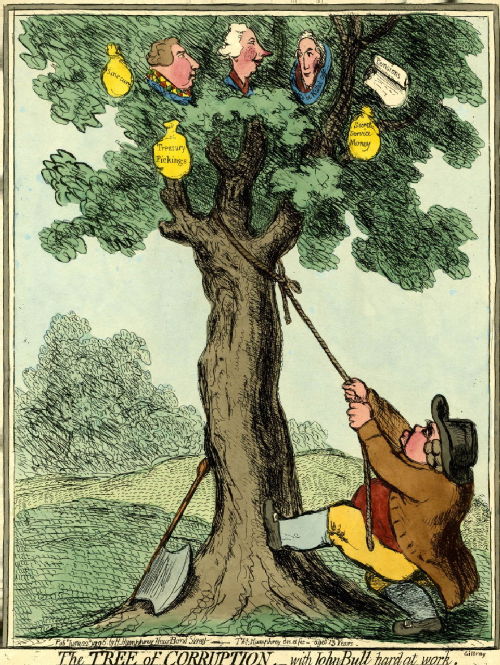
 Mark Knights
Mark Knights

 Please wait - comments are loading
Please wait - comments are loading


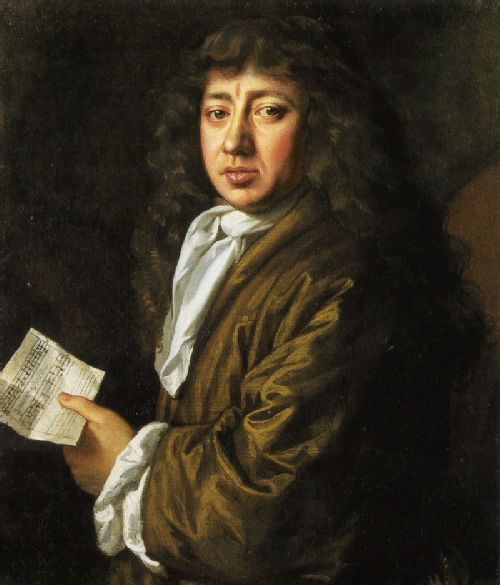 National Portrait Gallery image of Samuel Pepys
National Portrait Gallery image of Samuel Pepys 
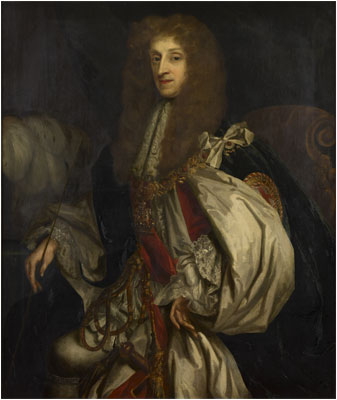 The Duke of Leeds (public domain image)
The Duke of Leeds (public domain image)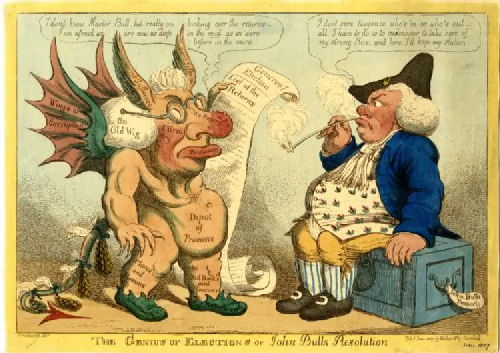
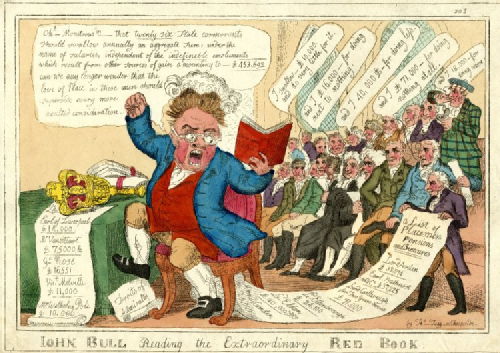





 The extent to which free speech includes a right to offend religious sensibilities is now being much debated in the light of the murder of French satirists at Charlie Hebdo in Paris.
The extent to which free speech includes a right to offend religious sensibilities is now being much debated in the light of the murder of French satirists at Charlie Hebdo in Paris. 
 Loading…
Loading…

